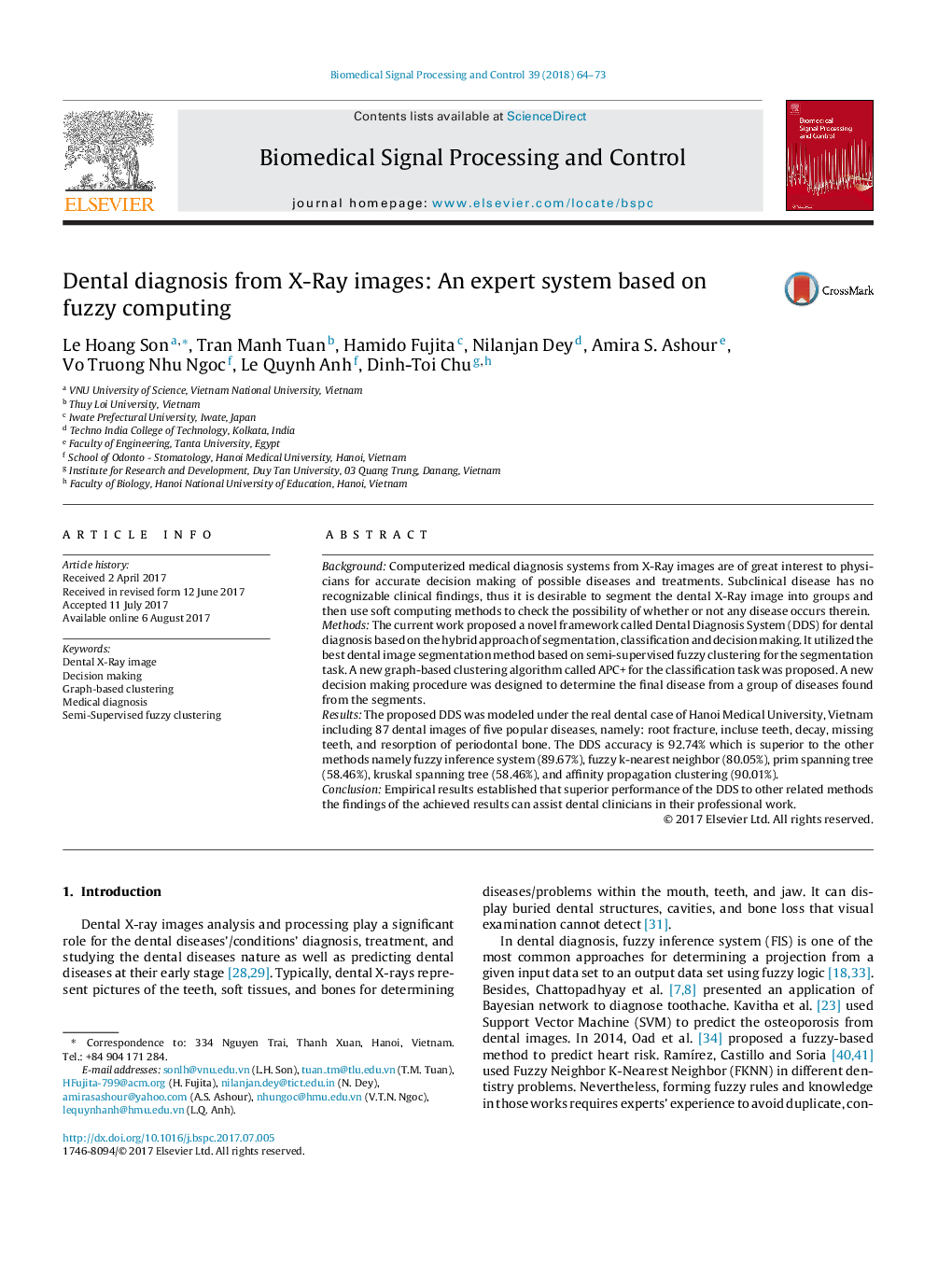| کد مقاله | کد نشریه | سال انتشار | مقاله انگلیسی | نسخه تمام متن |
|---|---|---|---|---|
| 4973466 | 1451641 | 2018 | 10 صفحه PDF | دانلود رایگان |
- We proposed a novel framework called DDS for dental diagnosis problem.
- It used a novel semi-supervised fuzzy clustering for segmentation tasks.
- It used a novel graph clustering to clarify most similar diseases from database.
- It determined the final disease through a new decision-making procedure.
- It had better performance than the relevant ones by empirical validation.
BackgroundComputerized medical diagnosis systems from X-Ray images are of great interest to physicians for accurate decision making of possible diseases and treatments. Subclinical disease has no recognizable clinical findings, thus it is desirable to segment the dental X-Ray image into groups and then use soft computing methods to check the possibility of whether or not any disease occurs therein.MethodsThe current work proposed a novel framework called Dental Diagnosis System (DDS) for dental diagnosis based on the hybrid approach of segmentation, classification and decision making. It utilized the best dental image segmentation method based on semi-supervised fuzzy clustering for the segmentation task. A new graph-based clustering algorithm called APC+ for the classification task was proposed. A new decision making procedure was designed to determine the final disease from a group of diseases found from the segments.ResultsThe proposed DDS was modeled under the real dental case of Hanoi Medical University, Vietnam including 87 dental images of five popular diseases, namely: root fracture, incluse teeth, decay, missing teeth, and resorption of periodontal bone. The DDS accuracy is 92.74% which is superior to the other methods namely fuzzy inference system (89.67%), fuzzy k-nearest neighbor (80.05%), prim spanning tree (58.46%), kruskal spanning tree (58.46%), and affinity propagation clustering (90.01%).ConclusionEmpirical results established that superior performance of the DDS to other related methods the findings of the achieved results can assist dental clinicians in their professional work.
Journal: Biomedical Signal Processing and Control - Volume 39, January 2018, Pages 64-73
